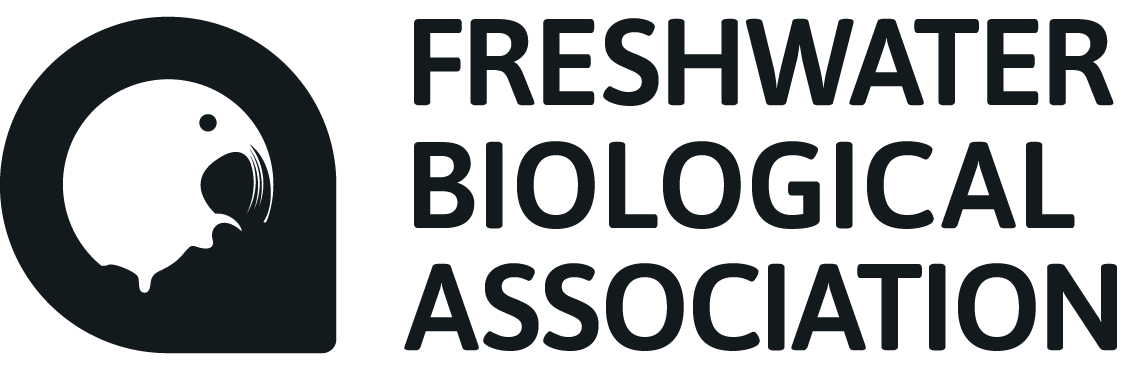Freshwater Biology and Ecology Handbook is published (Jul, 2022)
20 July, 2022
New Freshwater Biology and Ecology Handbook for experts and citizen scientists
The Foundation for Water Research (now part of the Institution of Environmental Sciences) (FWR/IES) and the Freshwater Biological Association (FBA) are pleased to announce the launch of their Freshwater Biology and Ecology Handbook.
The unique scientific and charitable roles of the FWR/IES and FBA have enabled this book to be written in partnership with freshwater biology and water management experts and allow for it to be published free of charge and for public good, for use by the public, experts and regulators.
The book provides a core training and reference text for water professionals, ecologists, students and citizen scientists alike, and can therefore make a significant contribution to the protection and improvement of freshwater rivers and lakes.
River health is increasingly important in our busy and crowded world, but it is threatened by the growing impacts of climate change and human activity. The book emphasises that if the biology and ecology of water ecosystems are in balance then water will be fit for human use. In this context, biological and ecological assessment is a crucial element of good water management.
We must protect our precious freshwater natural resource and manage the environment sustainably, using long-term river basin planning and management. These principles are enshrined in EU legislation under the Water Framework Directive and the requirements for it embedded in UK law, which will be taken forward through the UK’s 25 Year Environment Plan.
Increasingly, biological monitoring and assessment are being used to drive infrastructure improvements in the water industry and other activities in rural and urban environments. High quality river basin planning requires constant improvements to monitoring, assessment, and reporting, without reducing the precision needed to facilitate complex decision-making. This handbook will help develop the protection and improvement of the water environment.
The authors have taken an innovative approach to providing a structured and accessible guide for this specialist area. Working with a design partner, they have produced a visually appealing book filled with photographs, text prompts, and hyperlinks to the original research, guidance and policy documents, enabling the material to be read at many levels. The book is designed to be accessible to a range of readers including policymakers, environment agencies, river managers, environmental scientists and professionals, and students, as well as being of relevance for citizen science initiatives.
The principles of good river basin planning, monitoring and assessment are common worldwide, and the information and methods described in the book are applicable to the UK, Europe and river basins around the world. Elements of this have been used in European accession countries, Turkey, China and India through knowledge exchange programmes; these exchanges provided the original stimulus for the development of this book.
The UK leaving the EU brings new opportunities, challenges and uncertainty to river management both in the UK and across the EU. Capturing current knowledge and best practice will help this transition and allow the next generation of biologists, ecologists and policymakers to build and enhance the knowledge and skills needed to protect our water environment. They will have to adapt to new and emerging pressures such as climate change, novel chemicals, micro-plastics, changes to land use and agricultural practices, invasive species, and the biodiversity crisis, as well as exploiting new technologies for environmental monitoring and assessment. This handbook will help in this process.
Notes to editors:
1. The book will be available to all as an e-document on both the FWR/IES and FBA websites at the following links: https://fwrinformationcentre.co.uk/biology-and-ecology-handbook/index.html and https://freshwaterbio.sharepoint.com/:b:/s/Website-Library/EUXHjpTehT5NgKm481fY588BuijeuSgHwiEckrVurK7jxQ?e=AhqbC2. A small number of hard copies have been printed for distribution to key organisations and individuals.
2. This handbook is closely linked to Regulation for Water Quality: how to Safeguard the Water Environment by Chris Chubb, Martin Griffiths and Simon Spooner, a sister book published by FWR in July 2014. This book was also published for the public good and can be viewed online or downloaded for free at: http://www.fwr.org/WQreg/WQFull.pdf. A limited number of hard copies are still available.
3. The IES is a visionary organisation leading debate, dissemination and promotion of environmental science and sustainability. The organisation promotes an evidence-based approach to decision- and policymaking, and it is dedicated to championing the crucial role of environmental science in ensuring the well-being of humanity, now and in the future. In early 2022, the IES was chosen as the inheritor organisation for the FWR. Reflecting this new addition to the IES family, the IES will be extending its activities around the supply, conservation and stewardship of water as it works to continue the legacy, vision and mission of the FWR.
4. The FBA is dedicated to understanding and protecting freshwaters across the globe. Over the past 100 years FBA has contributed to the fundamental science behind current monitoring and assessment methods. FBA expertise, with partners, shaped the core monitoring and assessment methods now used by the environment agencies in the UK, the European Union and across the globe. FBA continue to work at the front line of aquatic biology, often with partners in government, academia, environment agencies and the Rivers Trusts.
5. We expect this book to become a core text for water managers, ecologists, freshwater biologists and students. Training programmes and MSc modules will be developed from this in future phases of development of the book.
6. The book focuses on invertebrate methods. Other biological assessment methods are in use and include fish, macrophyte and algal monitoring, but are outside the current scope of this book. DNA methods are also in development. We regard this as an open document and invite other experts to contribute new chapters in the future.
7. The views, thoughts and opinions expressed in the text belong solely to the authors, and are not necessarily those of governments, the authors’ employers, organisations, committees or other groups or individuals.
8. Copyright for the book is held by FWR and FBA.

